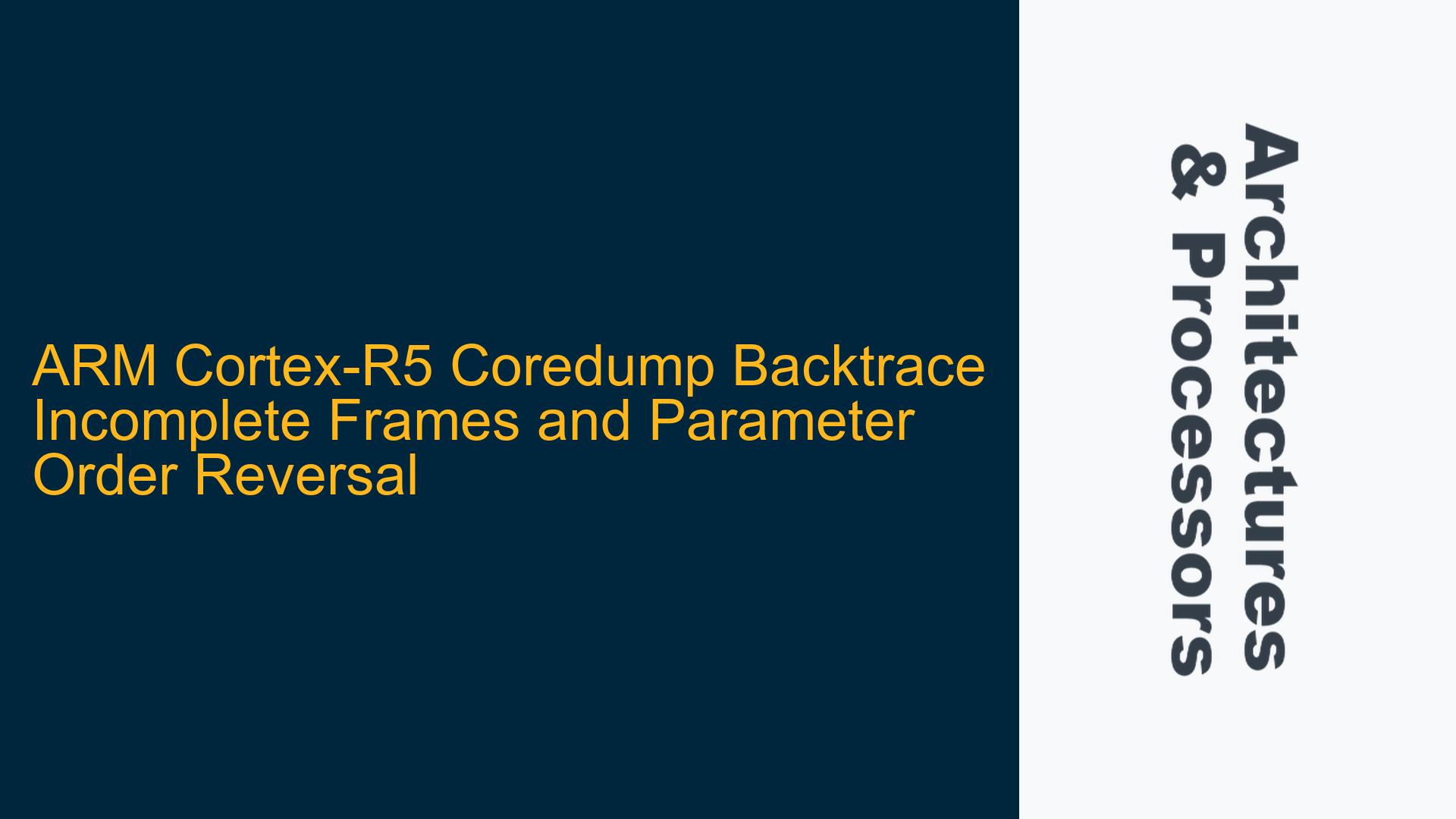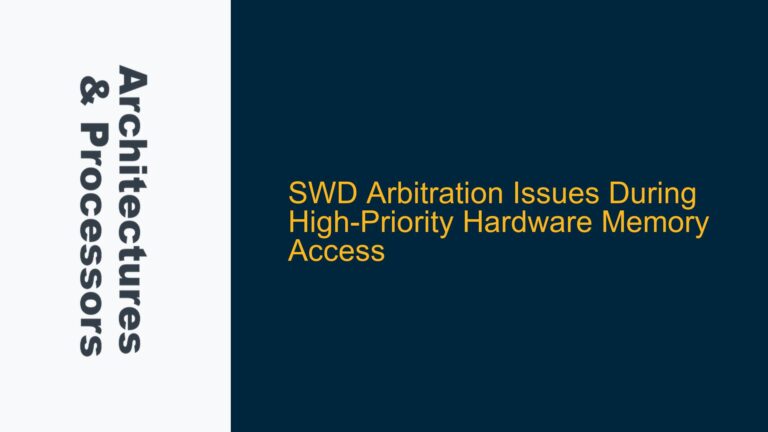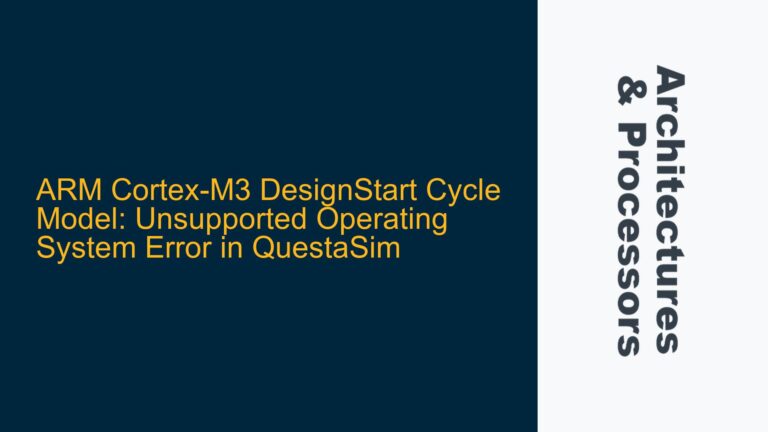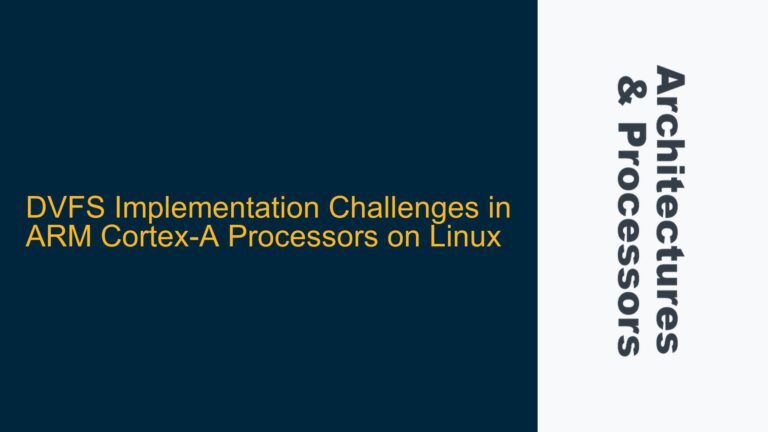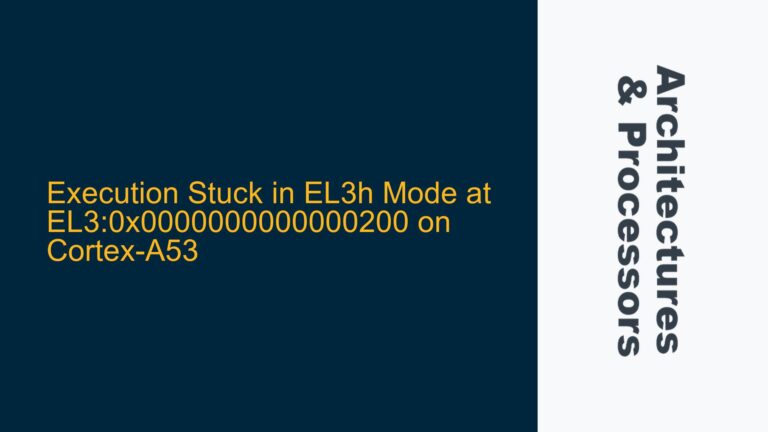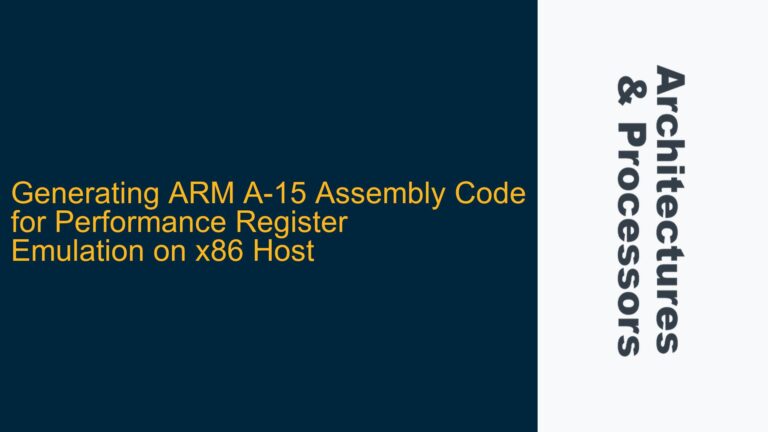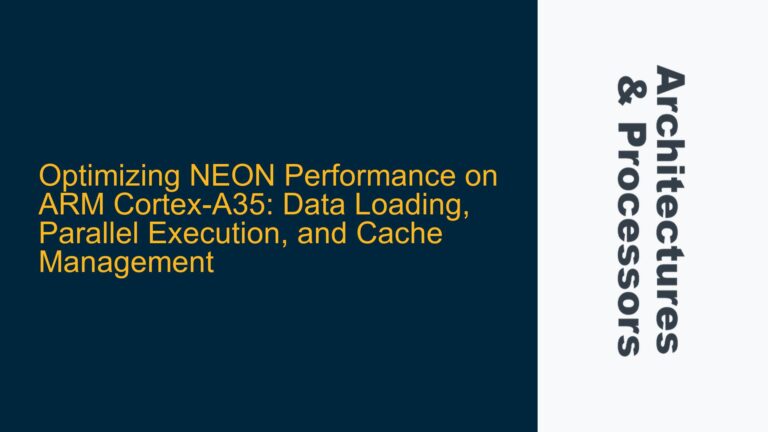ARM Cortex-R5 Coredump Backtrace Incomplete Frames and Parameter Order Reversal
Issue Overview: Incomplete Backtrace Frames and Parameter Order Reversal in ARM Cortex-R5 Coredump Analysis
When analyzing a coredump generated from an ARM Cortex-R5 processor running FreeRTOS, two primary issues arise. First, the backtrace generated by GDB only displays the top two frames from the point of the crash, omitting the remaining frames. This severely limits the ability to trace the execution flow leading up to the exception. Second, the order of input parameters passed to function calls is reversed when compiler optimizations such as -O2 are enabled. This reversal complicates debugging efforts, as the parameter order does not match the source code, making it difficult to correlate the coredump data with the original program logic.
The coredump is captured during an exception, specifically a Data Abort, with the processor in System mode. The Stack Pointer (SP/r13), Link Register (LR/r14), and Program Counter (PC/r15) values are saved, with the PC adjusted by an offset of 8 to account for the exception entry. Despite this, the backtrace remains incomplete, and the parameter order issue persists, raising questions about the adequacy of the coredump capture process and the impact of compiler optimizations.
Possible Causes: Frame Pointer Omission and Compiler Optimization Effects
The incomplete backtrace issue is likely caused by the use of the -fomit-frame-pointer compiler option. This option omits the storage of stack frame pointers during function calls, which are critical for GDB to reconstruct the call stack. Without frame pointers, GDB can only trace back through the top two frames, as it lacks the necessary information to navigate further down the stack. The frame pointer (FP) typically serves as a reference point for locating the return address and the previous frame’s FP, enabling GDB to traverse the call stack. When the FP is omitted, this chain is broken, and GDB cannot proceed beyond the immediate frames.
The parameter order reversal issue is a direct consequence of compiler optimizations, particularly at the -O2 level. The ARM Application Binary Interface (ABI) specifies how parameters are passed to functions, typically using registers and the stack. However, aggressive optimizations can alter the order in which parameters are pushed onto the stack or loaded into registers, leading to discrepancies between the source code and the compiled binary. This behavior is exacerbated when the -fomit-frame-pointer option is used, as it further obscures the stack layout, making it difficult for GDB to interpret the parameter order correctly.
Additionally, the coredump capture process itself may not be comprehensive enough to provide all the necessary information for a complete backtrace. The coredump includes the SP, LR, and PC values, but it may lack other critical details such as the contents of the stack and the values of other registers that could aid in reconstructing the call stack. The adjustment of the PC by an offset of 8, while necessary to account for the exception entry, may also introduce complications if not handled correctly during the coredump analysis.
Troubleshooting Steps, Solutions & Fixes: Implementing Frame Pointers and Adjusting Coredump Capture
To address the incomplete backtrace issue, the first step is to recompile the code with the -fno-omit-frame-pointer option. This ensures that frame pointers are preserved in the generated binary, allowing GDB to reconstruct the call stack accurately. The frame pointer serves as a stable reference point for navigating the stack, enabling GDB to trace back through multiple frames. This change should be made in the build configuration, and the entire application should be rebuilt to ensure consistency.
Once the code is recompiled with frame pointers enabled, the coredump should be recaptured and analyzed again using GDB. This should result in a more complete backtrace, as GDB will now have the necessary information to traverse the call stack. It is also advisable to verify that the coredump capture process includes all relevant register values and stack contents, as these can provide additional context for the backtrace.
To address the parameter order reversal issue, it is important to understand the impact of compiler optimizations on the ARM ABI. The -O2 optimization level can alter the order in which parameters are passed to functions, particularly when the -fomit-frame-pointer option is used. To mitigate this, consider reducing the optimization level to -O1 or -O0 during debugging. This will minimize the impact of optimizations on the parameter order, making it easier to correlate the coredump data with the source code.
In addition to adjusting the optimization level, it may be necessary to modify the coredump capture process to include more detailed information about the stack and register states. This can be achieved by extending the coredump handler to capture the contents of the stack and additional registers at the time of the exception. This additional information can then be used by GDB to reconstruct the call stack and interpret the parameter order correctly.
Finally, it is important to validate the coredump analysis process to ensure that the PC adjustment is handled correctly. The PC is typically adjusted by an offset of 8 to account for the exception entry, but this adjustment must be applied consistently during the coredump analysis. Any discrepancies in the PC adjustment can lead to incorrect backtrace information, further complicating the debugging process.
By implementing these changes, the issues of incomplete backtrace frames and parameter order reversal can be effectively addressed, enabling more accurate and reliable coredump analysis on the ARM Cortex-R5 platform.
Detailed Analysis and Implementation
Frame Pointer Preservation
The preservation of frame pointers is critical for accurate backtrace generation. When the -fomit-frame-pointer option is used, the compiler omits the storage of the frame pointer, which is typically stored in the ARM register r11. This omission breaks the chain of frame pointers that GDB relies on to traverse the call stack. By recompiling the code with the -fno-omit-frame-pointer option, the frame pointer is preserved, allowing GDB to reconstruct the call stack accurately.
The frame pointer serves as a reference point for locating the return address and the previous frame’s frame pointer. This chain of frame pointers enables GDB to navigate through the call stack, from the current frame back to the initial frame. Without this chain, GDB can only trace back through the top two frames, as it lacks the necessary information to proceed further.
Compiler Optimization Impact
The -O2 optimization level can have a significant impact on the order in which parameters are passed to functions. The ARM ABI specifies that parameters are typically passed in registers r0 through r3, with additional parameters passed on the stack. However, aggressive optimizations can alter this order, leading to discrepancies between the source code and the compiled binary.
When the -fomit-frame-pointer option is used, the stack layout can become more complex, further complicating the interpretation of parameter order. By reducing the optimization level to -O1 or -O0, the impact of these optimizations can be minimized, making it easier to correlate the coredump data with the source code.
Coredump Capture Process
The coredump capture process must be comprehensive enough to provide all the necessary information for accurate backtrace generation. This includes capturing the contents of the stack and the values of all relevant registers at the time of the exception. The coredump handler should be extended to include this additional information, which can then be used by GDB to reconstruct the call stack and interpret the parameter order correctly.
The PC adjustment must also be handled consistently during the coredump analysis. The PC is typically adjusted by an offset of 8 to account for the exception entry, but this adjustment must be applied correctly to ensure accurate backtrace information. Any discrepancies in the PC adjustment can lead to incorrect backtrace information, further complicating the debugging process.
Validation and Testing
Once the changes have been implemented, it is important to validate the coredump analysis process to ensure that the backtrace is accurate and complete. This can be achieved by generating a coredump from a known test case and verifying that the backtrace matches the expected call stack. Any discrepancies should be investigated and addressed to ensure the reliability of the coredump analysis process.
By following these steps, the issues of incomplete backtrace frames and parameter order reversal can be effectively addressed, enabling more accurate and reliable coredump analysis on the ARM Cortex-R5 platform.
Conclusion
The issues of incomplete backtrace frames and parameter order reversal in ARM Cortex-R5 coredump analysis are primarily caused by the use of the -fomit-frame-pointer compiler option and the impact of compiler optimizations. By recompiling the code with the -fno-omit-frame-pointer option, reducing the optimization level, and extending the coredump capture process to include more detailed information, these issues can be effectively addressed. This will enable more accurate and reliable coredump analysis, facilitating the debugging process and ensuring the stability of the system.
